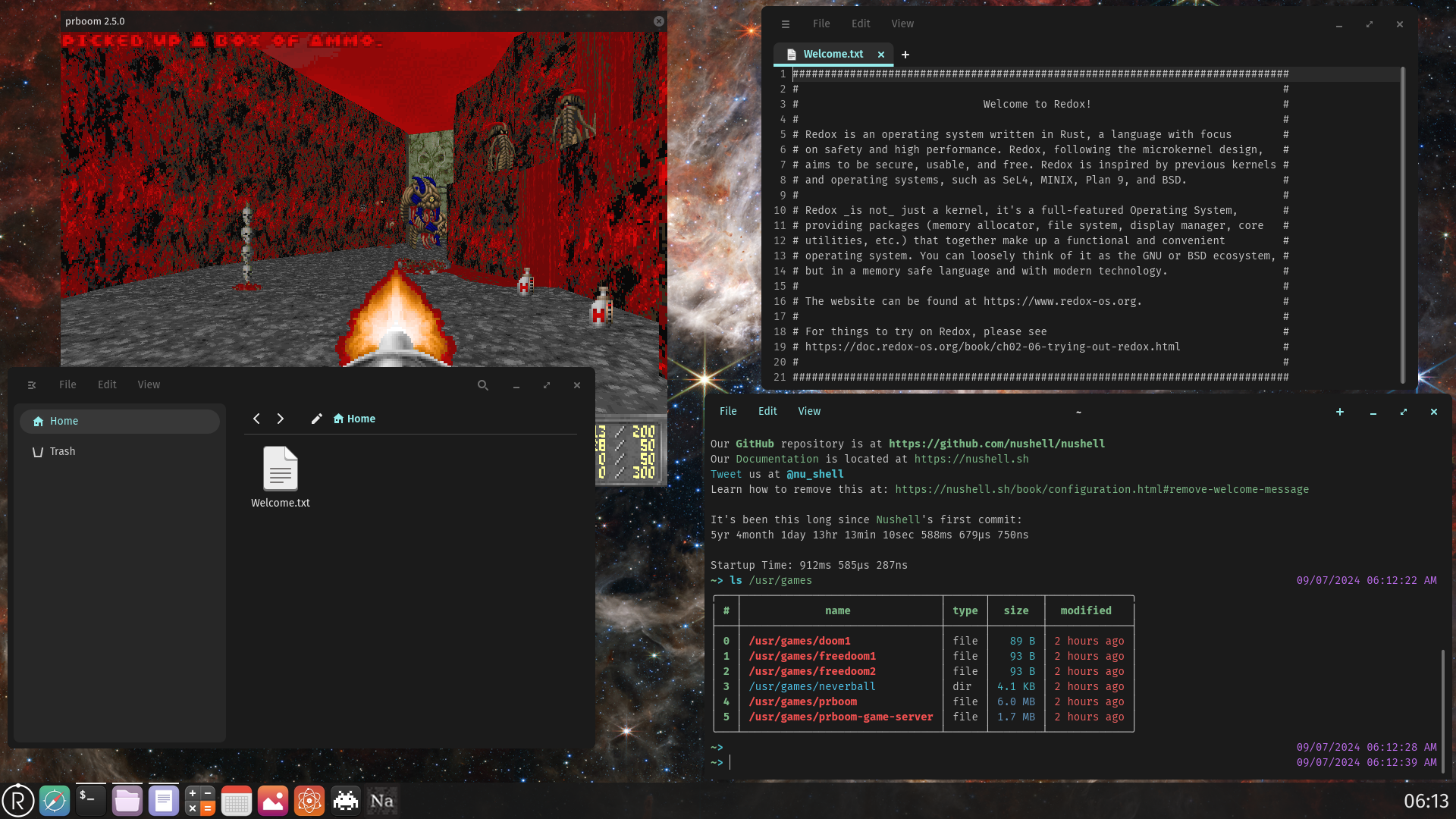

Click for longer opinion
If I remember correctly, even though Fuchsia is used in production, it is mainly targetting mobile or IoT devices. Nevertheless, the underlying micro-kernel, Zircon, is written in C/C++, which differs from Redox. Now, I’m not saying that Redox solves everything by writing the kernel in Rust. It will require plenty unsafe blocks to achieve what it needs, but it makes you aware beforehand that you should be careful about how you implement that bit of code. Having this clear marking could also make the kernel code review process more likely to catch issues.
Disregarding this, if I am not mistaken, Redox aims to be a drop-in replacement for Linux one day, both for desktop and server, while Fuchsia only wishes to be integrated in/replace Android. Linux is perfectly fine for most use cases, I am not suggesting otherwise! However, given how many issues resulted from overflow/memory corruption issues that could have been potentially easier to identify if Rust (or any other memory safe language) was used, you’d think that there is incentive to rely on it for kernel development. Linus himself made this decision as well when allowing Rust to be used in the Linux kernel development (albeit perhaps a bit too early).
The Linux kernel is not flawed, and Redox is probably years away from being even near it. However, having memory-safety from the get-go as a requirement for developing the kernel could lead to fewer exploits, compared to what we have today with Linux. Just as you’ve said, most users are not aware of it/they don’t care, but the big players will care about keeping information safe on their servers. Just to conclude, Redox OS is not just Linux rewritten in Rust, and could potentially have many other benefits that are particularly juicy for data centers. Too bad it’s not production ready yet :D









Piracy. I’d buy albums if I had money, though. I’ll slowly phase into getting them once I get some more cash.
I can find most stuff I listen to, and I rarely grow my music library. I mostly listen to 20-30 albums, with some more mainstream music peppered in.
My music library currently sits at 90 gigabytes (mostly flacs), so quite small compared to others I’ve seen around here. Still, I have plenty of variation to keep me entertained :D
If you have Tidal, aren’t there some apps to rip the lossless audio from there? You could get most of the stuff that you need, and then cancel the subscription. If you feel bad, maybe order some merch from the band, haha.